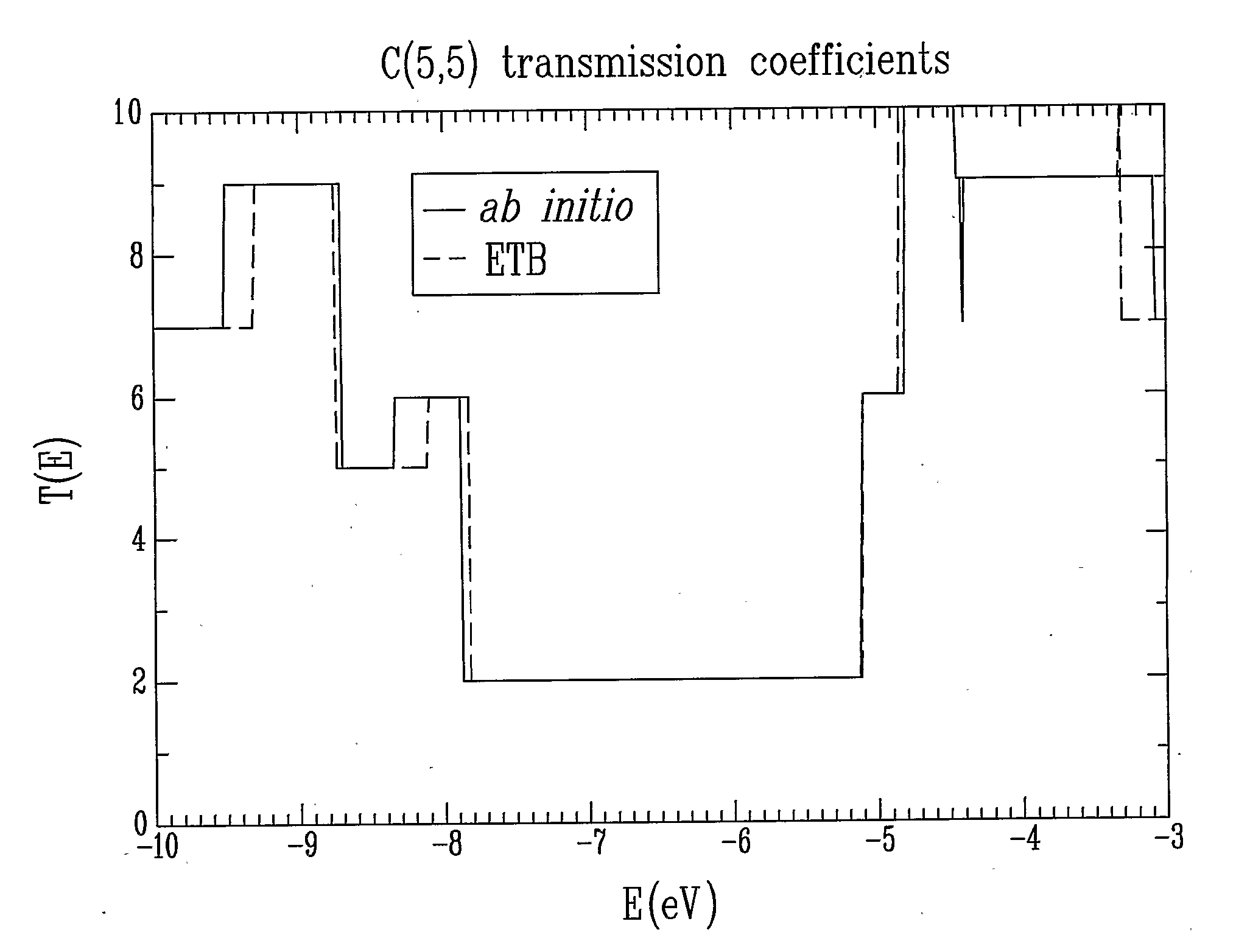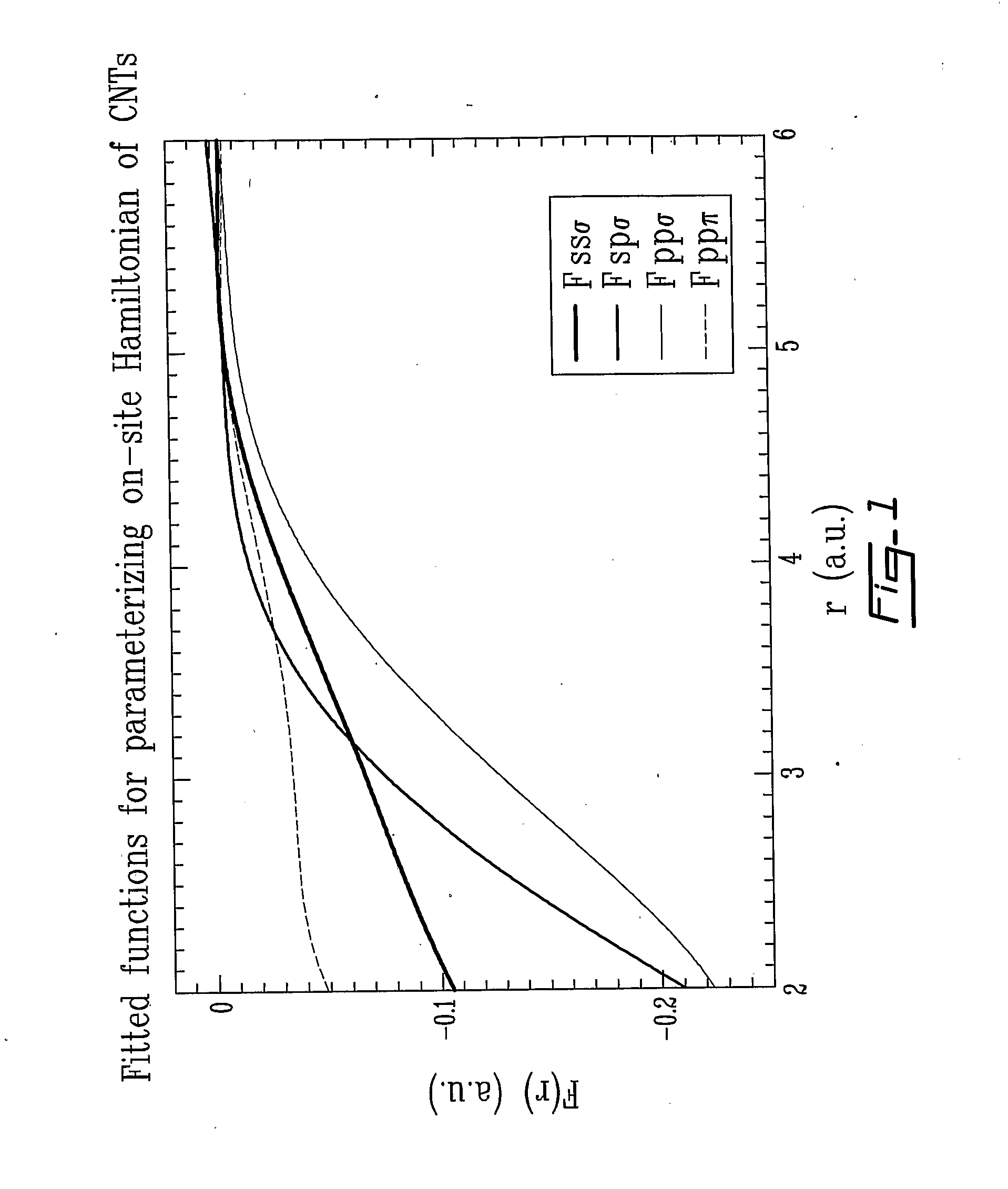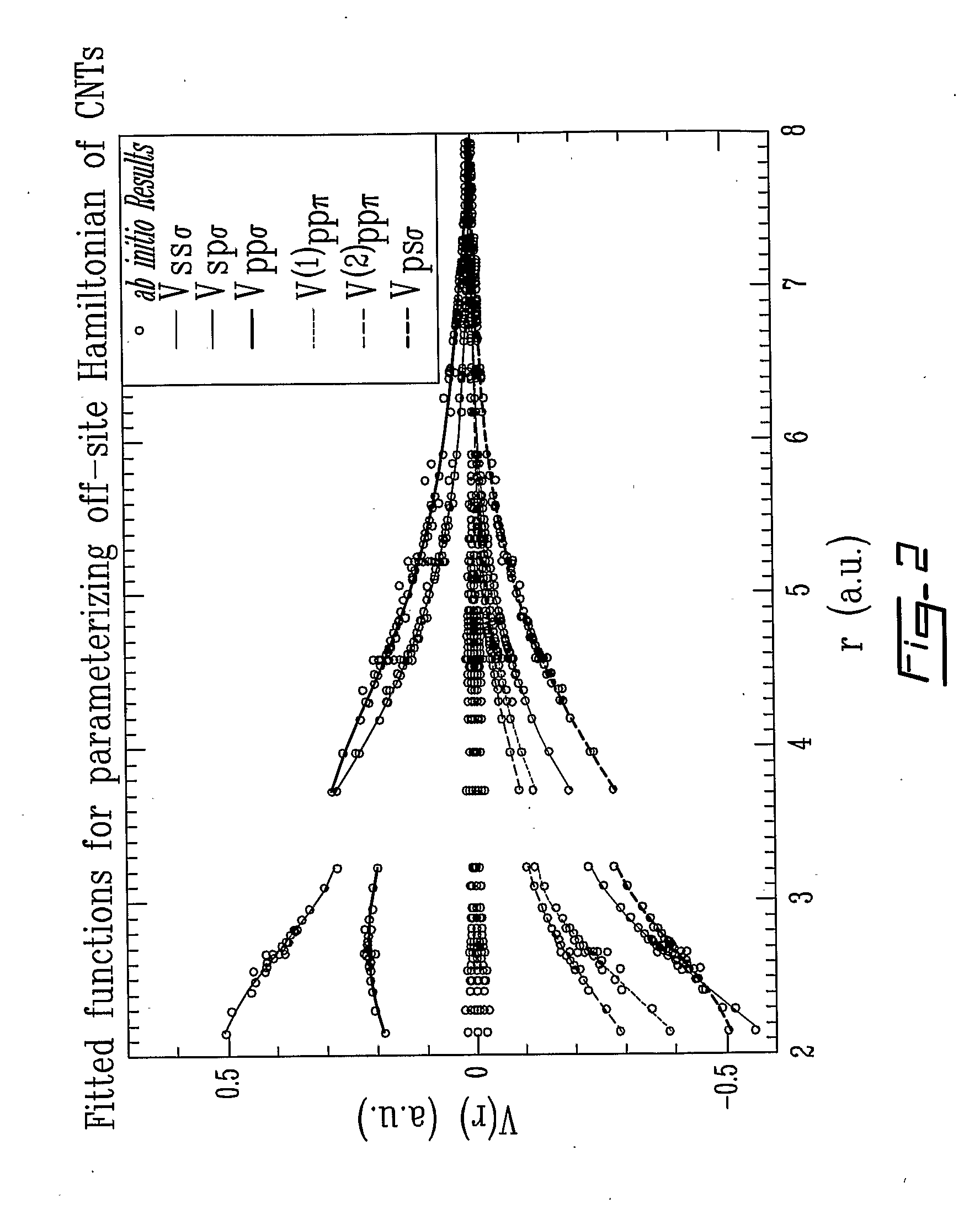Nano molecular modeling method
a molecular modeling and nano-scale technology, applied in nanoinformatics, instruments, computational theoretical chemistry, etc., can solve the problems of limiting the relevance of nano-tech systems to and the state-of-the-art electronic device modeling methods based on atomistic quantum mechanical first principles can only deal with systems involving roughly 1000 atoms or less
- Summary
- Abstract
- Description
- Claims
- Application Information
AI Technical Summary
Problems solved by technology
Method used
Image
Examples
Embodiment Construction
[0028] There is provided a multi-scale modeling method, which bridges a length scale gap between the two domains of current nano-systems discussed above, and therefore provides a powerful means to help developing a future generation of electronic devices, and has a wide range of applicability in the understanding and prediction of material, electronic and transport properties of nanoscale systems.
[0029] Based on previous methods developed so far as described hereinabove, the present method allows a qualitative leap, whereby nanosystems comprising from a single atom all the way to about 50 nm may be modeled.
[0030] The present method for bridging length scales in nano-electronics modeling has been developed along four directions, as follows: for devices involving up to about a few thousands atoms, even up to 10,000 atoms, the method comprises using a self-consistent first principles atomistic formalism; for devices involving up-to one million atoms, the method comprises using a tigh...
PUM
 Login to View More
Login to View More Abstract
Description
Claims
Application Information
 Login to View More
Login to View More - R&D
- Intellectual Property
- Life Sciences
- Materials
- Tech Scout
- Unparalleled Data Quality
- Higher Quality Content
- 60% Fewer Hallucinations
Browse by: Latest US Patents, China's latest patents, Technical Efficacy Thesaurus, Application Domain, Technology Topic, Popular Technical Reports.
© 2025 PatSnap. All rights reserved.Legal|Privacy policy|Modern Slavery Act Transparency Statement|Sitemap|About US| Contact US: help@patsnap.com



